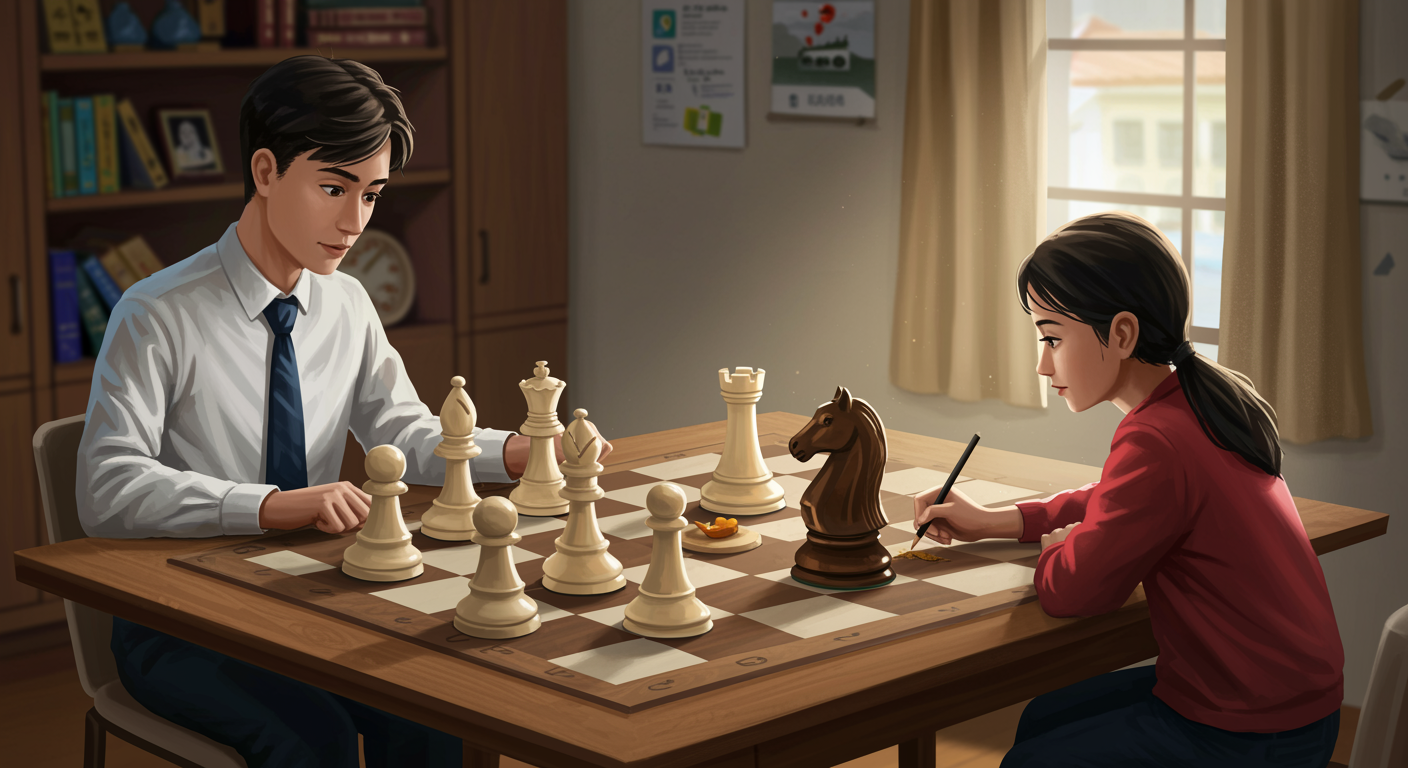
Consider two scenarios. In the first, a sophisticated digital entity, a computer program, systematically outmaneuvers the reigning world chess champion, predicting moves with uncanny accuracy and executing strategies of profound depth. In the second, that same advanced artificial intelligence falters when asked to perform a task most preschoolers master – say, correctly placing oddly shaped blocks into corresponding holes. It’s a striking paradox: an AI that can conquer a game of immense intellectual complexity seems utterly bewildered by a basic child’s toy. This observation challenges our intuitive understanding of what it means to be “intelligent” and highlights a fundamental divergence in how humans and current AI systems process the world.
So, why this apparent contradiction? The answer lies in the distinct nature of the problems themselves and the different types of intelligence they demand. Chess, for all its strategic depth, is a “closed-world” problem. It operates within a perfectly defined environment: a 64-square board, 32 pieces, and a clear set of rules governing every possible move. Every piece of information is available to both players, and the consequences of every action are entirely predictable. This makes it an ideal playground for computational search algorithms.
For AI systems like Deep Blue or AlphaZero, chess is a massive, yet finite, decision tree. They can leverage immense processing power to explore millions, even billions, of potential move sequences, evaluating outcomes based on pre-programmed heuristics or, in the case of AlphaZero, learning entirely through self-play. This latter approach, using reinforcement learning, allowed AlphaZero to master chess, Go, and Shogi by playing against itself untold times, discovering strategies no human had ever conceived. It’s like navigating a meticulously detailed map with clear roads, intersections, and predictable traffic rules; the AI simply finds the optimal path through sheer computational muscle and pattern recognition within this perfect system. This digital mastery of complex, rule-bound games showcases the incredible power of modern computer algorithms.
Now, contrast this with the child’s puzzle. While seemingly simple, it introduces a host of challenges that push current AI to its limits. This isn’t a digital simulation; it’s the real world. The blocks have physical properties – weight, texture, friction, and an infinite number of possible orientations. The holes aren’t perfectly defined digital slots but physical openings that might have subtle imperfections. The act of picking up a block, rotating it, and fitting it into a hole requires fine motor control, real-time spatial reasoning, and an understanding of physics, like gravity and inertia, which are rarely explicitly programmed. This is a problem of embodied cognition and common sense, areas where AI still significantly lags human capability.
Current AI systems, particularly those focused on deep learning, excel at identifying patterns within vast datasets. They can classify images, understand speech, and even generate text with impressive fluency. However, they struggle with the kind of flexible, contextual understanding that underpins our interaction with the physical world. For a human child, a block is an object with inherent properties and a purpose. They intuitively grasp that it falls if dropped, can be stacked, and fits only into a hole of a matching shape. An AI, without explicit programming or extensive training in a physical environment, lacks this inherent understanding. It doesn’t “know” what a block is in the human sense.
Furthermore, the data for physical tasks is incredibly messy and hard to acquire. For chess, millions of games can be simulated or downloaded. For stacking blocks, each interaction is unique, subject to subtle variations in lighting, grip, and surface conditions. Training an AI for such tasks often requires expensive robotic setups and countless hours of trial and error in the real world or in hyper-realistic simulations. This data gap, combined with the difficulty of transferring knowledge from one physical task to another, remains a significant hurdle for innovation in robotics and general-purpose AI. The challenge isn’t just about processing power; it’s about making sense of an inherently ambiguous and dynamic reality.
What does this tell us about the future of digital intelligence? It suggests that true general intelligence – the kind that allows us to seamlessly navigate both abstract strategy games and real-world physical challenges – requires a blend of symbolic reasoning, perceptual understanding, and embodied interaction. Researchers are actively pursuing solutions through multimodal learning, combining vision, touch, and sound, and developing more sophisticated reinforcement learning techniques that can generalize across varied physical environments. We are seeing breakthroughs in areas like robotic manipulation, but the intuitive adaptability of a human toddler remains a distant, though aspirational, goal for general AI.
Ultimately, this contrast illuminates the unique strengths of human cognition, which effortlessly combines high-level reasoning with common-sense physics and motor skills. While AI continues to push boundaries in specialized domains, its struggle with a child’s simple puzzle reminds us that intelligence isn’t a monolithic entity. Rather, it’s a rich tapestry of interwoven capabilities, many of which remain uniquely human. Understanding these distinctions is crucial as we continue to integrate advanced AI into our world, recognizing its profound power while also acknowledging its current limitations.